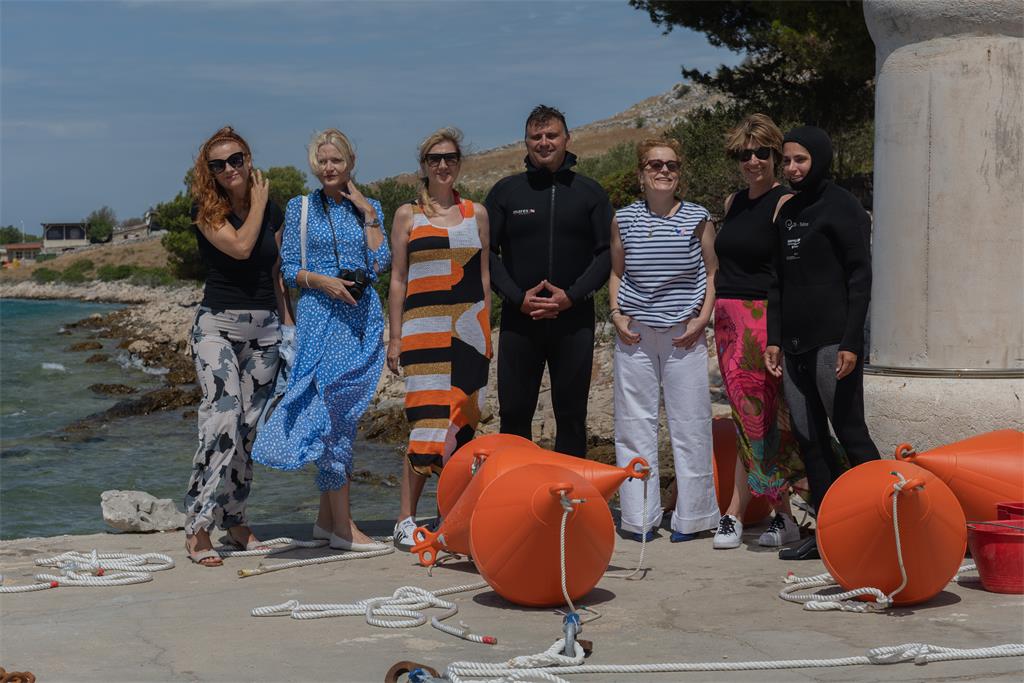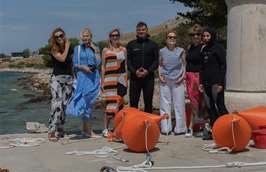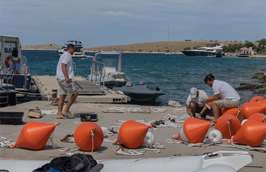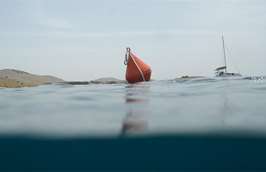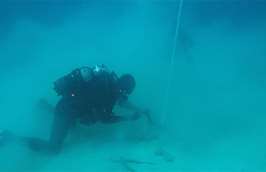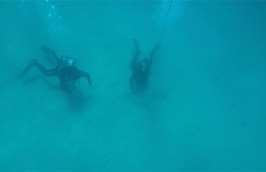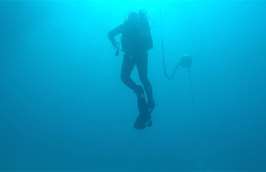20.07.2021.
To prevent illegal mooring and protect the underwater habitat, Kornati National Park installed new mooring buoys in Vrulje bay in cooperation with the Environmental Protection and Energy Efficiency Fund and the Ministry of Tourism and Sport.The plan is to install the total of 224 buoys in 19 mooring bays by spring next year, with part of the funding for this purpose being secured through the Fund and two European Interreg projects.
“Kornati can be visited only by sea, so buoys are a kind of parking spaces for boats. That is why having a safe anchoring place is essential for boaters. However, we do not want the anchors to be lowered ploughing the seafloor uncontrollably because it destroys the biocenosis of the seabed. Installing the new buoys will largely prevent this,” sad the director of NP Kornati Šime Ježina. He explained that the new buoys were not placed on concrete blocks but were instead fixed using the “Earth Anchor” system, which is a method of drilling through the sand and sediment into the rock and by installing a sort of “anchor”, which remains dug into the drillhole without any significant damage to the seafloor. This method of buoy installation, and forbidding anchoring outside the mooring spots, will help preserve the Posidonia oceanica meadows.
“The status of the seabed, from both biological and sedimentological point of view, is degrading significantly. The anchors “ploughing” the sea floor destroy the habitats of the marine flowering plant Posidonia oceanica, which the European Union recognised as one of the priority conservation habitats in the Natura 2000 network. This species is endemic to the Mediterranean, and it is crucial to preserve the Posidonia meadows,” said Vesna Cetin Krnjević, the head of the Department for the implementation of EU projects at the Fund. She also pointed out that the Posidonia meadows were “oxygen factories” in areas of great biodiversity. “More than 20% of the known Mediterranean species live in these seagrass meadows. On every Posidonia oceanica leaf you can find more than 30 types of algae, and the meadows are habitats, spawning and feeding grounds for more than 100 fish species, the majority of which are important economically. With its intertwined sprawling foliage and upright shoots, the seagrass prevents the sea currents from washing out the sediment, and it has an important role in the circulation of nutrient salts in the sea,” explained Cetin Krnjević.
Installation of new buoys, as well as other planned activities that are aimed at digitalisation that will allow an integrated approach and better control of the number of visitors to the Kornati waters are one additional step toward sustainable instead of mass tourism. “By investing in new content such as this one, educational diving trails, and “Olive Gardens” eco-education trails in the postseason will upgrade the level of tourist services offered at the national park, and at the same time preserve the Kornati archipelago as unique natural values in this area,” said the INHERIT project manager at the Ministry of Tourism and Sport Anamarija Vukčević.
